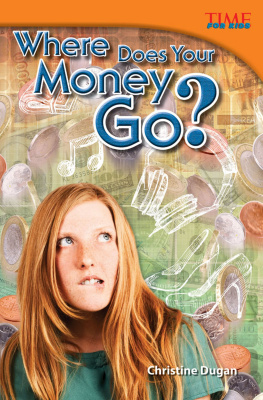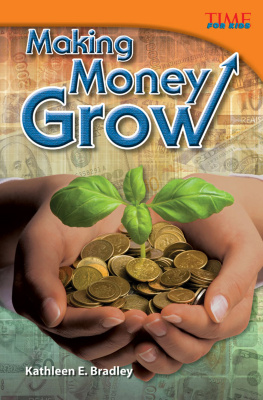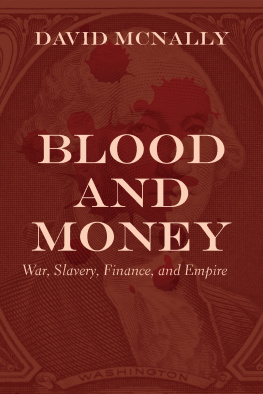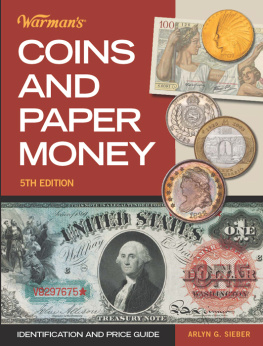
Debra J. Housel
Buy It! History of Money Housel
M ney M ney
Buy It!
History of


Consultant
Timothy Rasinski, Ph.D.
Kent State University
Publishing Credits
Dona Herweck Rice, Editor-in-Chief
Robin Erickson, Production Director
Lee Aucoin, Creative Director
Conni Medina, M.A.Ed., Editorial Director
Jamey Acosta, Editor
Heidi Kellenberger, Editor
Lexa Hoang, Designer
Leslie Palmer , Designer
Stephanie Reid, Photo Editor
Rachelle Cracchiolo, M.S.Ed., Publisher
Image Credits
Cover Dtopal/Dreamstime; p.3 Robyn Mackenzie/Shutterstock; p.4 LOC [LC-USF33- 012354-M4];
p.5 Edmonds, Francis William/Collection of the New-York Historical Society, USA/The Bridgeman
Art Library International; p.6 Shutterstock; p.7 ItaliaStock/Punchstock; Eric Issele/Shutterstock;
p.8 top to bottom: Marilyn Angel Wynn/DanitaDelimont/Newscom; Lena Lir/Shutterstock; p.9
left to right: Best View Stock/Alamy; The Image Works; p.10 Block, IRA/National Geographic
Stock; p.10 inset: The Image Works; p.11 Justin Sullivan/Getty Images; p.12 The Image Works;
p.13 Mary Evans Picture Library; p.14 Doug Mills/AP; p.15 fstockfoto/Shutterstock; p.16 Stuart
Gregory/Getty Images; p.17 Olga Lipatova/Shutterstock; p.19 top to bottom: Kike Calvo/V&W/
The Image Works; NatUlrich/Shutterstock; p.20 Lauren Goodsmith/The Image Works; p.21 top to
bottom: SuperStock; Fer Gregory/Shutterstock; p.22 top to bottom: Jill Battaglia/Shutterstock;
Jiri Hera/Shutterstock; p.23 top: Bill Aron/PhotoEdit; p.23 left to right: Elnur/Shutterstock; Elena
Elisseeva/Shutterstock; lenetstan/Shutterstock; AVAVA/Shutterstock; p.24 Michael Newman/
PhotoEdit; p.25 Tyler Olson/Shutterstock; p.26 Monkey Business Images/Shutterstock; p.27 Bob
Daemmrich/Image Works; p.28 left to right: Alex Staroseltsev/Shutterstock; The Image Works;
p.29 left to right: Mikhail Pogosov/Shutterstock; Steve Collender/Shutterstock; Paul Fleet/
Shutterstock; p.32 lenetstan/Shutterstock; background: Robyn Mackenzie/Shutterstock; Africa
Studio/Shutterstock; Gina Sanders/Shutterstock; back cover: Vaclav Volrab/Shutterstock
Based on writing from TIME For Kids.
TIME For Kids and the TIME For Kids logo are registered trademarks of TIME Inc.
Used under license.
Teacher Created Materials
5301 Oceanus Drive
Huntington Beach, CA 92649-1030
http://www.tcmpub.com
ISBN 978-1-4333-3681-2
2012 Teacher Created Materials, Inc.
Synched Read-Along Version by:
Triangle Interactive LLC
PO Box 573
Prior Lake, MN 55372
ISBN-13: 978-1-68444-868-5 (e-book)

Table of Contents
Before There Was Money ......................
The Invention of Money .......................
Coins ........................................
Paper Money ................................
The Exchange Rate ..........................
Troubles with Money .........................
Money Today ................................
Money Time Line ............................
Glossary ....................................
Index .......................................
About the Author ............................

Before There Was Money
sheep farmer
Imagine you are a sheep farmer from long ago. You have enough wool
to make two blankets. But, you need a shovel for your land. Theres no
store or catalog. The only way to get a shovel is to visit the toolmaker who
lives miles away. Without money, you must trade, or barter , what you have
to get what you want.

You walk to the toolmakers home with the blankets. He looks them
over. Then, he says he will trade a shovel for the blankets. You agree. The
two of you have made a good trade.
Does this sound like a good system? Its what everyone did long ago
to get what they needed. Such bartering is still done in some places of
the world. But, there are some problems with bartering. For example, the
toolmaker may not have needed blankets. Also, the sheep farmer had to
travel miles to get what he wanted.
Valuable Silver
Silver is rare. In 2500 B.C. , the people in what
is now Iraq stamped the weights of silver
bars on the bars themselves. The heavier the
bars, the greater their value. The bars could
then be used for trade.
a painting of a man
trying to trade a chicken

The Power of Money
Our world has changed a lot. Most
people no longer barter. Everyone uses
money to buy the things we need. Did
you know that kids in the United States
spend more than $15 million of their own
money each year? What do you use your
money to buy?

The Invention of Money
Over time, people realized that something had to be agreed on to
stand for value . Value is what something is worth. The first things used
as money had values of their own. For example, cows had value because
they gave milk. Spices were valuable because they were hard to find and
everybody wanted them.
At one time, spices were
popular items to trade.

Coins
Slowly people realized the item itself didnt need to be valuable. As
long as everyone agreed, such things as feathers, shells, and wampum
(WOM-puhm) could be used as money. People took these things in
exchange for work or goods. They knew that others would do the same
in exchange for what they wanted. But this system had problems, too.
Feathers blew away. Shells broke. People needed something easy to store























